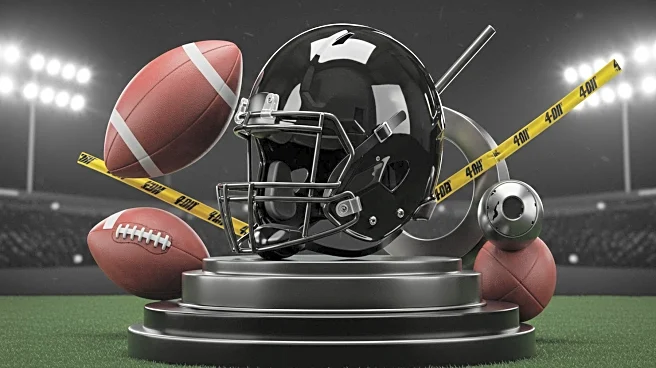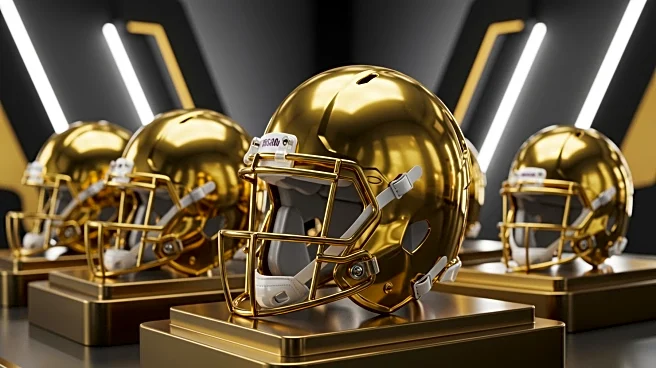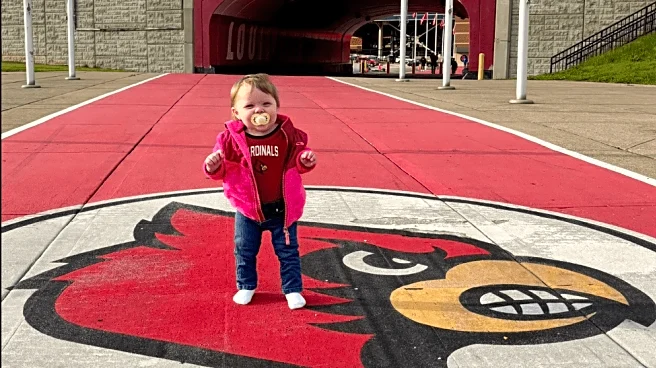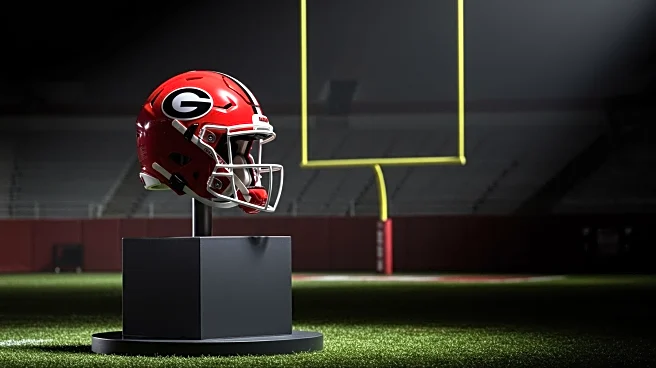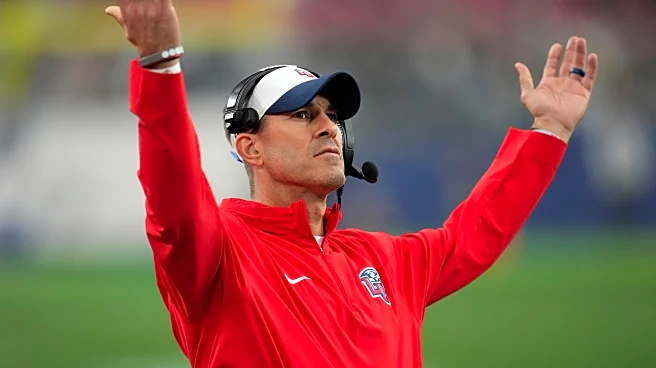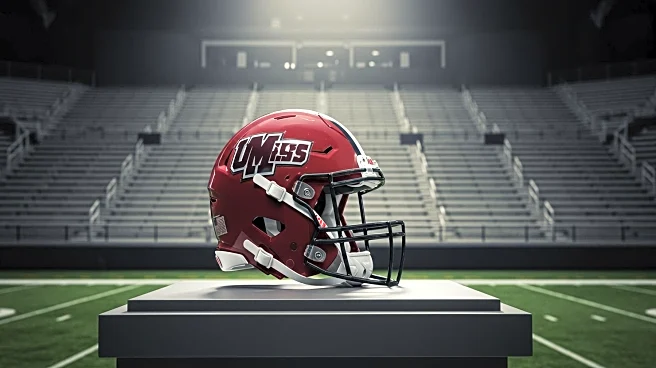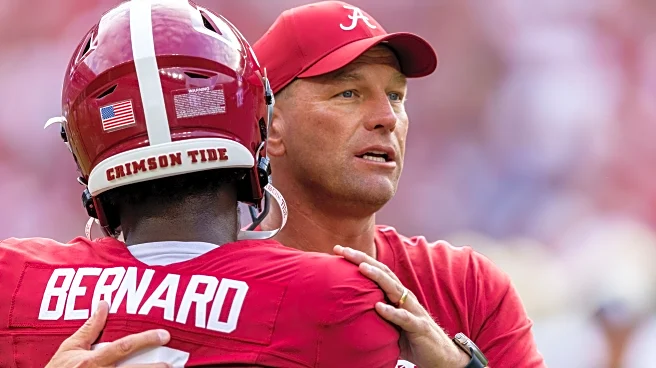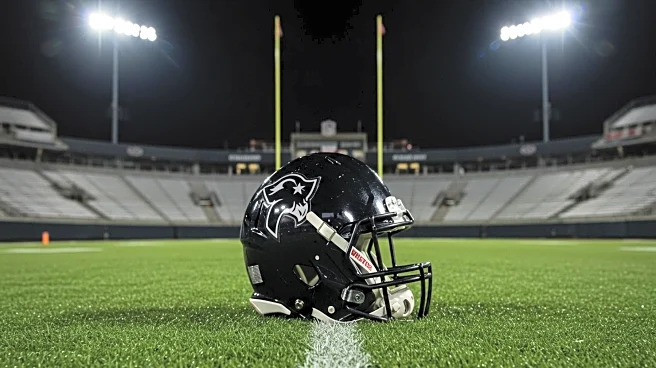What's Happening?
Baylor University has announced the return of its gold chrome helmets for the 2025 college football season, alongside new all-black uniforms. The announcement was made through a series of posts on X, showcasing the helmets with a slightly updated design compared to their previous iteration from 2013 to 2017. The team, led by head coach Dave Aranda, will debut these uniforms in their season opener against Auburn on August 29. Baylor is coming off a successful 2024 season with an 8-5 record, marking a recovery from previous losing seasons. The return of the gold chrome helmets is seen as a move to energize the fanbase, reminiscent of the team's successful run from 2013 to 2015 under former coach Art Briles.
Why It's Important?
The introduction of new uniforms and helmets is significant for Baylor University as it seeks to build momentum and excitement among its supporters. The aesthetic change is not just a visual update but also a nod to a period of past success, potentially boosting team morale and fan engagement. Baylor's recent performance under Dave Aranda has shown promise, and the new uniforms could symbolize a fresh start and renewed ambition. This move may also impact recruitment, as appealing uniforms can attract prospective players interested in joining a team with a strong identity and tradition.
What's Next?
Baylor's upcoming season will test the team's ability to capitalize on its recent resurgence. The early schedule is challenging, with games against Auburn, SMU, and Arizona State, all of which are formidable opponents. Success in these matches could set the tone for the season and help Baylor return to its previous levels of achievement. The team's performance will be closely watched by fans and analysts, as they assess whether the changes in uniforms and helmets translate into on-field success.
Beyond the Headlines
The decision to bring back the gold chrome helmets and introduce black uniforms may have deeper implications for Baylor's brand and identity. It reflects a strategic effort to connect with the team's history while also embracing modern trends in sports aesthetics. This move could influence other teams in the conference to consider similar updates, potentially leading to a broader shift in college football's visual culture. Additionally, the emphasis on tradition and innovation may resonate with alumni and supporters, strengthening community ties and support for the program.
